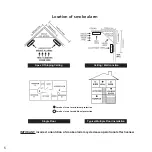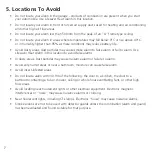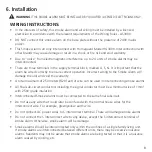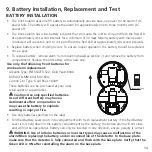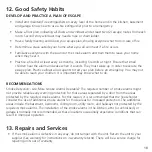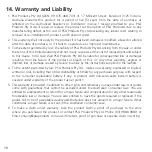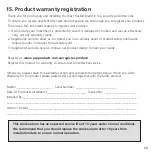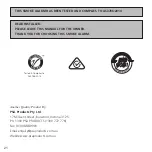
18
12. Good Safety Habits
DEVELOP AND PRACTICE A PLAN OF ESCAPE
• Install and maintain Fire extinguishers on every level of the home and in the kitchen, basement
and garage. Know how to use a fire extinguisher prior to an emergency.
• Make a floor plan indicating all doors and windows and at least two (2) escape routes from each
room. Second story windows may need a rope or chain ladder.
• Have a family meeting and discuss your escape plan, showing everyone what to do in case of fire.
• Determine a place outside your home where you all can meet if a fire occurs.
• Familiarize everyone with the sound of the smoke alarm and train them to leave your home
when they hear it.
• Practice a fire drill at least every six months, including fire drills at night. Ensure that small
children hear the alarm and wake when it sounds. They must wake up in order to execute the
escape plan. Practice allows all occupants to test your plan before an emergency. You may not
be able to reach your children. It is important they know what to do.
RECOMMENDATIONS
Smoke Detection - Are More Smoke Alarms Desirable? The required number of smoke alarms might
not provide reliable early warning protection for those areas separated by a door from the areas
protected by the required smoke alarms. For this reason, it is recommended that the householder
consider the use of additional smoke alarms for those areas for increased protection. The additional
areas include the basement, bedrooms, dining room, utility room, and hallways not protected by the
required smoke alarms. The installation of the smoke alarms in the kitchen, attic (or unfinished), or
garage is normally not recommended, as these locations occasionally experience conditions that can
result in improper operation.
13. Repairs and Services
• If the smoke alarm is defective in any way, do not tamper with the unit. Return the unit to your
supplier (See warranty for instructions on in-warranty returns). There will be a service charge for
repairing units out of warranty.


